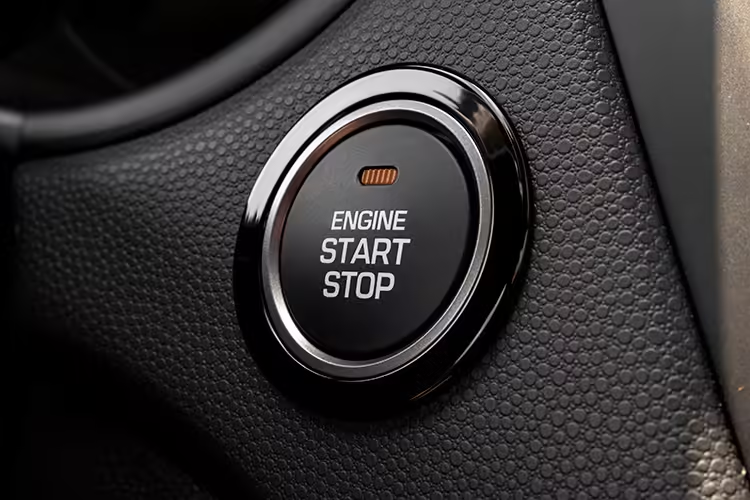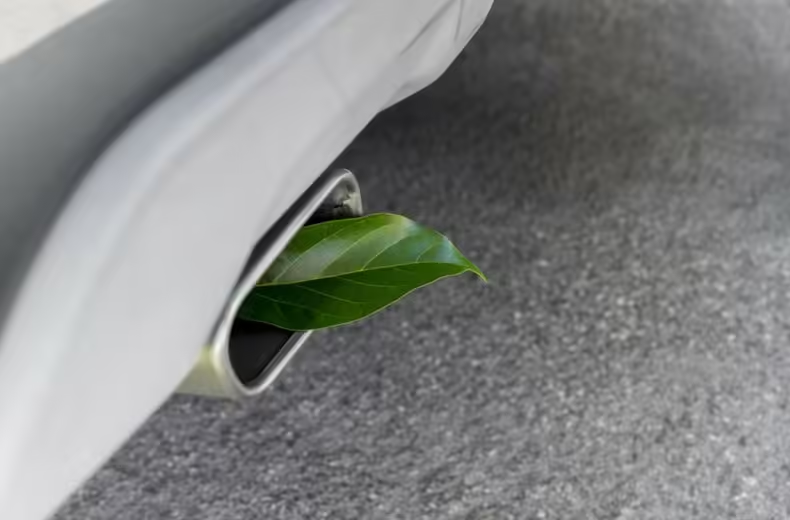Modern cars use start-stop system technology, and there are many advantages connected with fuel consumption and emissions. Despite the obvious advantages for the environment and for fuel consumption, many car owners and car lovers ask themselves, Are these systems good for the engine at all? Here, we’ll discuss pros and cons of the start-stop system and how it works. Should it negatively impact your car’s engine?
What is a Start-Stop System?
A start-stop system is an efficiency technology in many brand-new cars today where the vehicle will shut down the engine when the car is not in motion, like while at a traffic signal or packed traffic. Once the driver relieves pressure off the brake pedal or presses the clutch, the engine kicks in and is ready for use.

All these procedures occur smoothly without having to use any physical button to switch off or on the engine. Therefore, the primary aim of the start-stop system is to minimize the consumption of fuel and greenhouse gas emissions, especially CO2. It succeeds in saving fuel since the engine is not started when not needed; additionally, it emits nothing, which is customary with idling products or vehicles.
How Do Start-Stop Systems Actually Help?
Start-stop systems are fully dependent on many sensors and technologies to track the conditions of operation of the vehicle. These systems typically involve:
- Battery Monitoring: The use of start-stop systems is also important because the battery of the vehicle provides power to part of the car when the engine is not running. It is also important to mention that the system controls the battery charge level, so the engine won’t shut down if the battery is empty.
- Engine Control Unit (ECU): The ECU is in a critical position over washing off/on the engine based on the data collected from the buttons, such as brake usage, temperature in the engine, and the gear.
- Advanced Starter Motors: Traditional starter motors aren’t built for frequent use. Start-stop systems rely on enhanced starters that can handle the constant restarting of the engine without wearing out too quickly.
- Brake Pedal Sensors: In vehicles with automatic transmissions, the system monitors when the brake is pressed and releases to decide when to shut down or restart the engine. In manual transmissions, the clutch pedal plays a similar role.
The Benefits of Start-Stop Systems
1. Fuel Efficiency
By far the most obvious benefit of start-stop systems is the enhancement of fuel economy. Previous studies have revealed that the practice of allowing the engines to run leads to the consumption of a lot of fuel. By helping to switch off the engine when it is in idle or not required at all and then restart it whenever required, a low friction start-stop system can certainly reduce fuel consumption, especially during urban cycles.

Research also shows that start-stop vehicles are likely to record a fuel efficiency of between 5-10% better than vehicles without the system, depending on the driving style. For all those motorists who are daily commuters, especially in urban areas, this may translate to a lot of money saved in the long run.
2. Lower Emissions
It is important to know that start-stop systems can lead to important decreases in toxic emissions. This way the specific car releases less CO2 and other pollutive substances into the air during times of idling.
That is why it is crucial in cities in which the frequency of stop-and-go traffic leads to increased idling time and when air quality is particularly poor. To many manufacturers, emission reduction is a key factor in compliance with legal requirements regarding the emission of greenhouse gases in numerous countries.

Moreover, start-stop systems have emerged as a leading approach for assisting car manufacturers to meet and implement high emission standards.
3. Quieter Operation
Still another advantage of start-stop systems is that they minimize noise. During acceleration periods, there is acceleration of the produced engine sound, but during idle periods, there is no sound from the running engine. This is well embraced in urban or residential areas where noise is of the highest importance and concern is met.
Potential Downsides of Start-Stop Systems
Possible Disadvantages Associated with System of Start-Stop
As with any new technology attached to cars, there have been fears regarding the health of the engine with start-stop systems. Now, let’s try to look at the potential negative impacts.
Increased Wear on Engine Components
Another top filename to link start-stop systems is the level on working down of some areas of the vehicle, such as the starter motor and the battery. Stopping and starting the engine very often places extra load on these parts because that is when the engine is under the most stress. While modern cars that are fitted with start-stop systems have parts that are somewhat more durable, this constant usage may result in faster deterioration than those of normal cars.
And especially, the starter motor must be designed to endure multiple starts within one trip. They are not built for this, although the latest generation of cars with start-stop systems feature improved ones. Nonetheless, in the long run it is proven that extra wear exposes the component to breaking, which in due course necessitates repairs or even compulsory replacements.
2. Battery Drain
Start-stop systems are wholly dependent on the car’s battery, and they are a cause of complaints. The battery is the sole energy source when the engine is not running to charge, for example, the lighting, the air conditioning, and even the radio.
If the battery is dead, it may take some time to charge and supply the required power, in which case there will be faster discharge or outright failure. Modern automobile manufacturers employ new batteries for start-stop systems due to higher power demands; for example, AGM batteries. However, these batteries are easier to replace than the SLA batteries and are also costly and need regular maintenance.
3. Potential for Engine Damage
Potential for Engine Damage Of course, perhaps the biggest concern of start-stop systems is the effect of these systems on engines’ useful lives. Repetitive use of the engine leads to its early wear resulting from friction due to frequent starting of the engine. Traditional engines are designed to run continuously, so frequent starts could increase the strain on engine components, particularly if the oil has not circulated properly after a cold start.
However, modern engines are built to handle these frequent starts, and manufacturers often equip vehicles with systems to ensure proper lubrication before the engine restarts. Nonetheless, some drivers remain concerned about long-term engine damage, especially in older vehicles.
Is Start-Stop Technology Harmful to Your Engine?
Contrary to the belief that a start-stop system is detrimental to the lifecycle of the vehicle’s engine, the real situation lies in how effectively the system has been developed and serviced. Most of today’s cars with start-stop technology are designed to effectively cope with the resulting additional load on the engine parts, and the companies that developed the systems have done a lot to optimize the function.
Through the employment of high-end lubricants, good starter motors, and better battery technology, incorporating start-stop systems should not negatively affect a well-maintained engine. Still, problems may occur in the older models or with poorly maintained engines or batteries of vehicles.
To the drivers who would desire to maximize the aspect of use over a long period in one instance, then there is a need to practice frequent service. All these measures ensure that the condition of the battery is perfect; the use of good-quality lubricants and strictly following the manufacturer’s schedule of exercising care on the start-stop system will help avoid these problems.
Can You Turn Off the Start-Stop System?
Some autos equipped with start-stop systems give the driver the option of switching it off. This is particularly helpful if you are certain you will be starting and stalling often, such as in traffic congestion. However, by switching off the system, it loses the potential to save fuel and reduce emissions.
If you will like to turn off the system permanently, it’s advisable to seek the help of either the manufacturer to read the manuals or consult a professional mechanic on how to go about it without causing harm to the car.
Conclusion
Start-stop systems are clearly advantageous in their efficiency, reduction in emissions, and also decrease in noise. They are intended more as a refinement on the everyday actuality of driving, making it cheaper to operate and less damaging to the environment.
However, several disadvantages should be considered: the level of mechanical stress increased, negative impact on the battery, doubts about the reliability of engines. Today, vehicles are fitted with features to enable reduction of these risks. However, it is mandatory to service the system to ensure it runs efficiently.
If a start-stop system is right for your car depends on your driving style, the age of your vehicle, and how well the start-stop system is cared for. In most cases, the advantages make up for the drawbacks, but if you are driving an old car or one that spends lots of time in city traffic, one needs to take care of the health of the car’s engine and battery.
Discover expert car reviews, maintenance tips, and in-depth knowledge at My Car Wisdom. Whether you’re a beginner or a car enthusiast, we’ve got you covered. Make informed decisions with confidence—visit us today!

Raja Yadav, the content writer at My Car Wisdom, brings a unique voice and style to our blog. With a knack for storytelling and a keen eye for detail, Raja ensures that every piece of content is informative, engaging, and easy to understand. His focus is on delivering high-quality articles that cater to both novice car owners and seasoned automotive enthusiasts.



